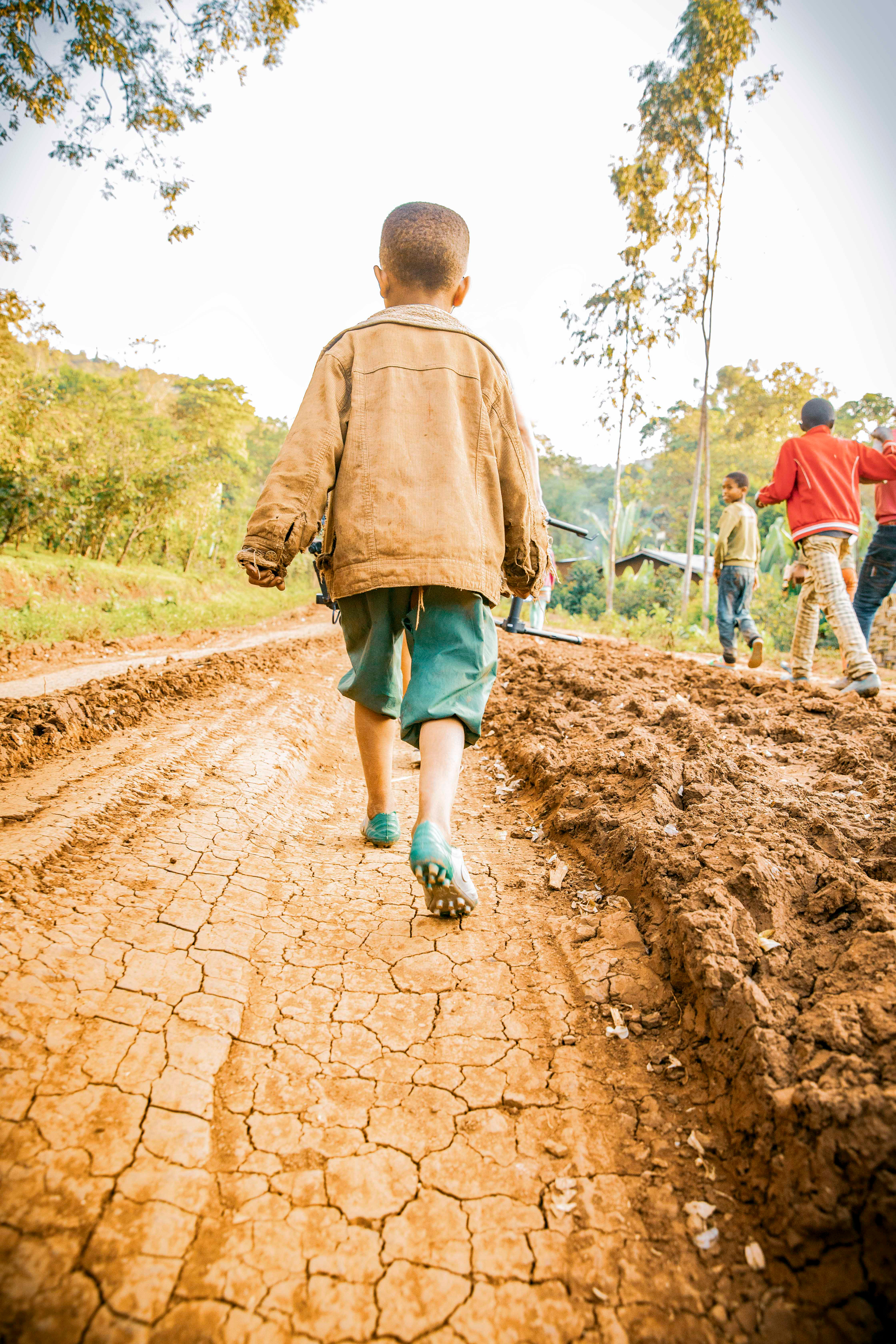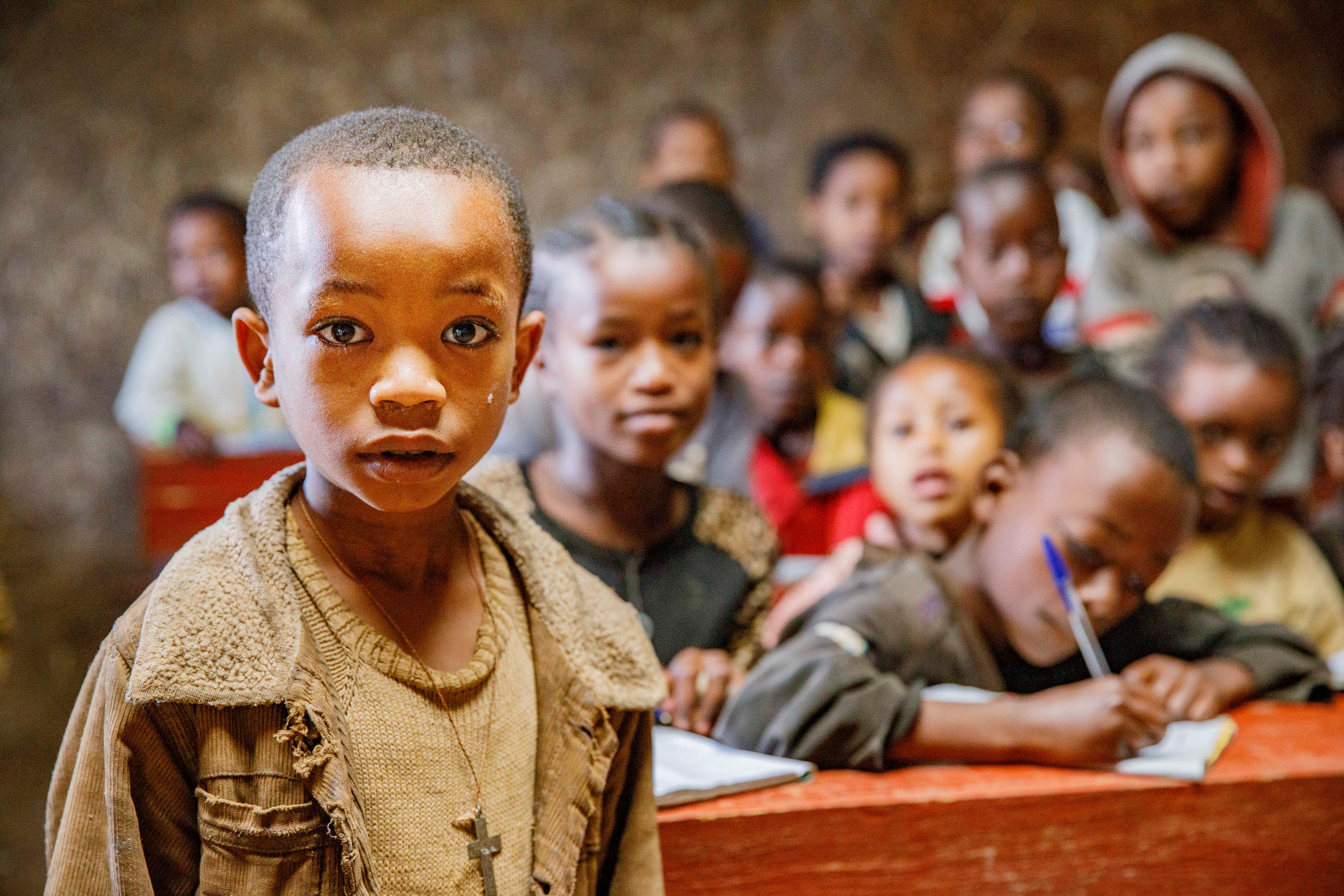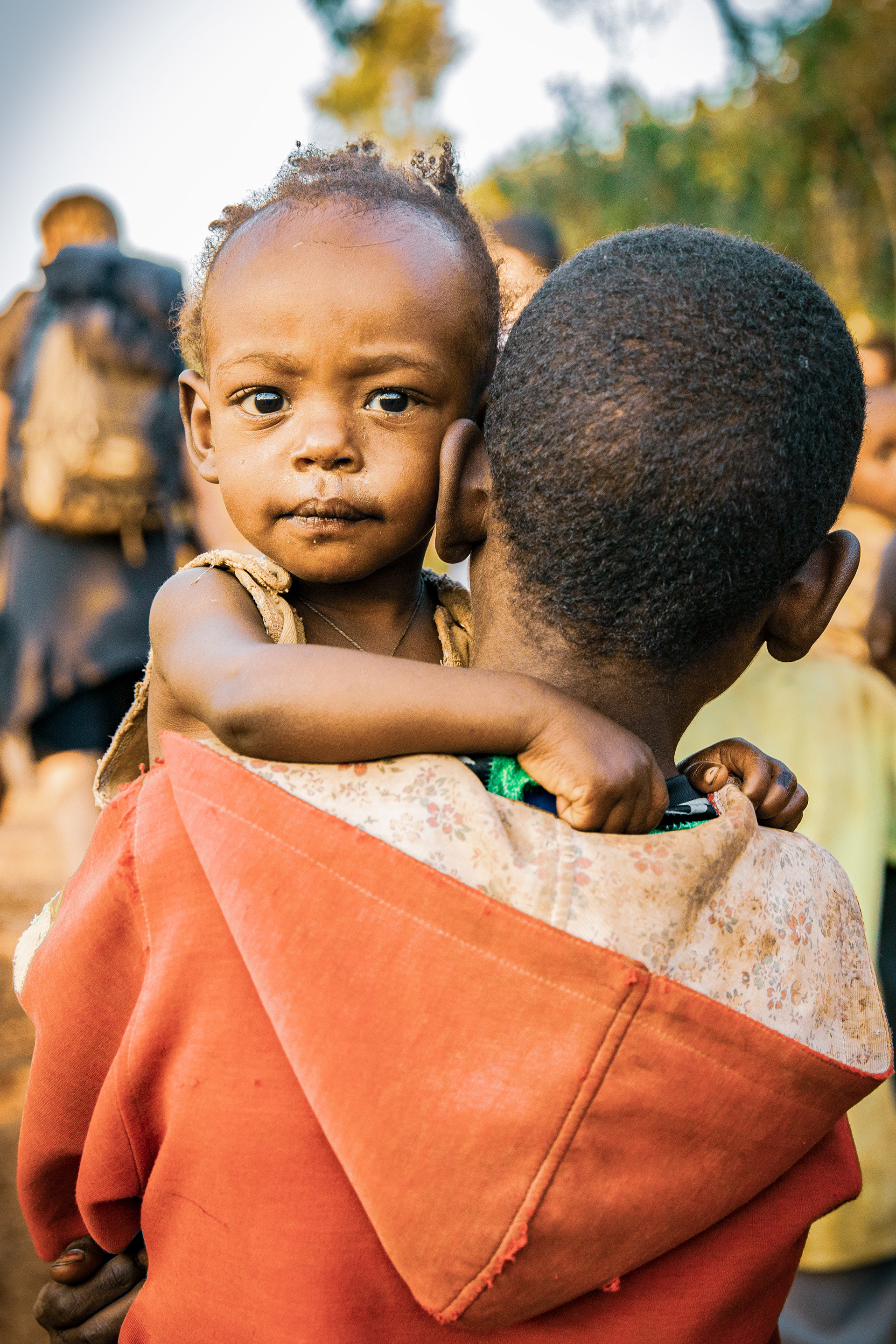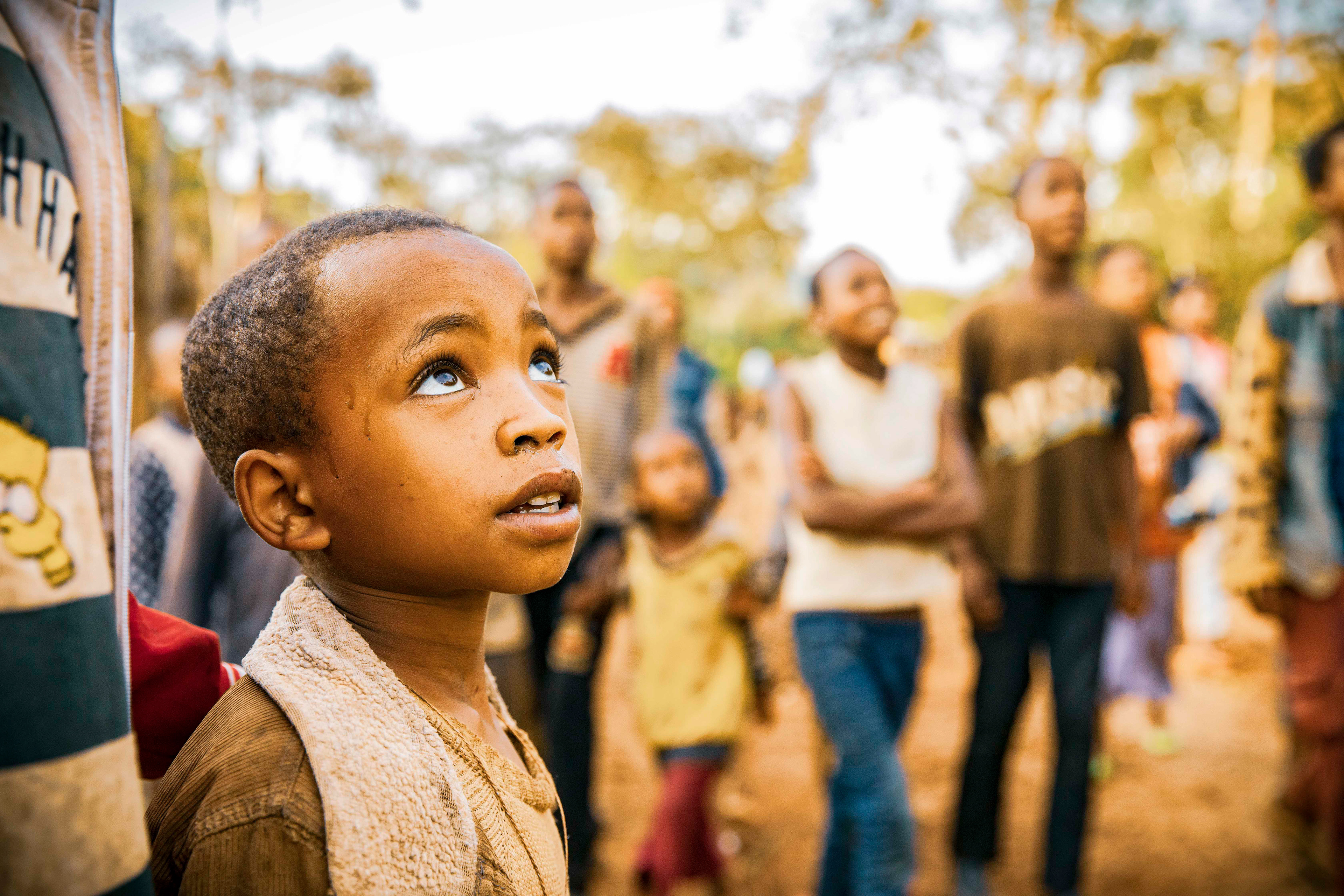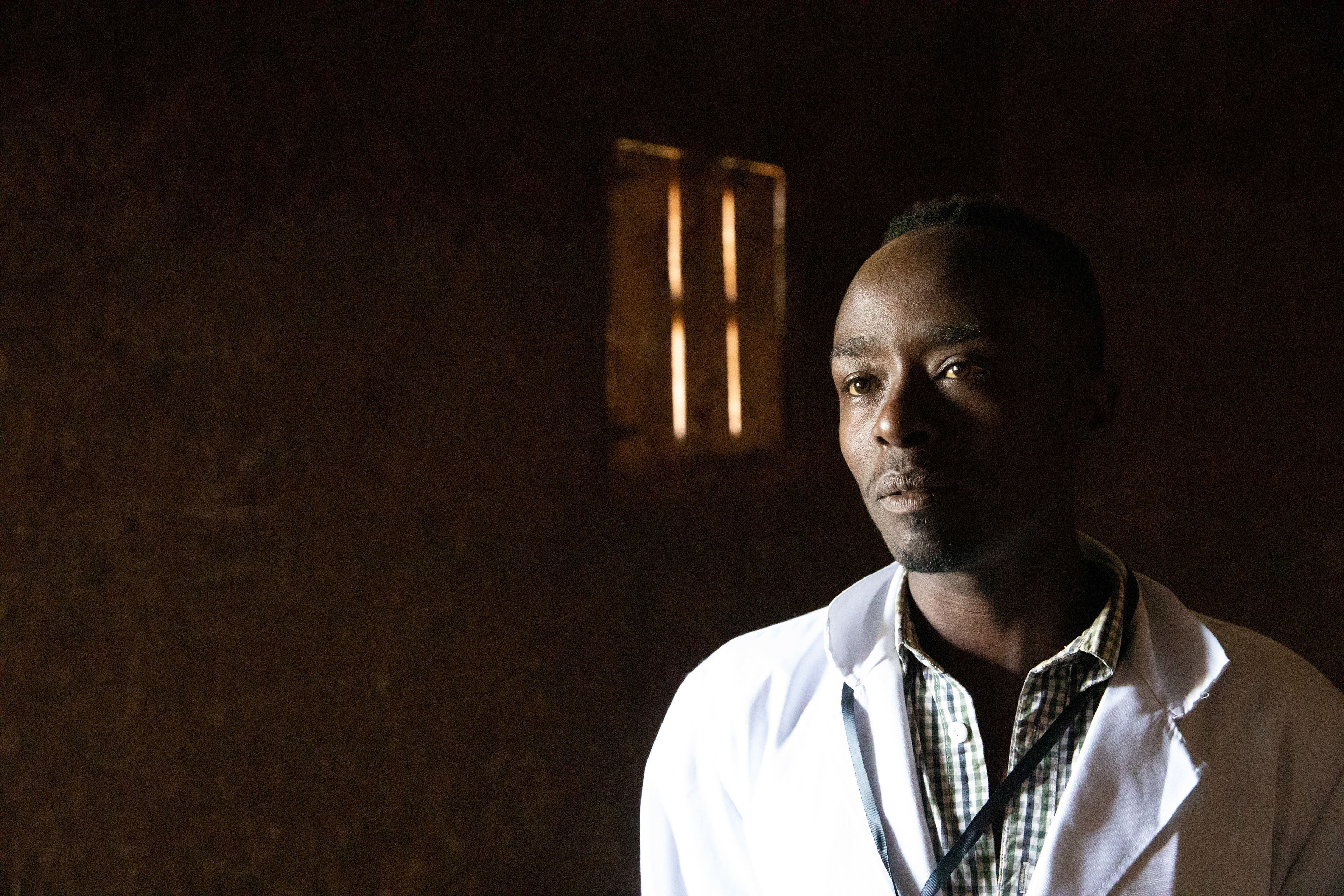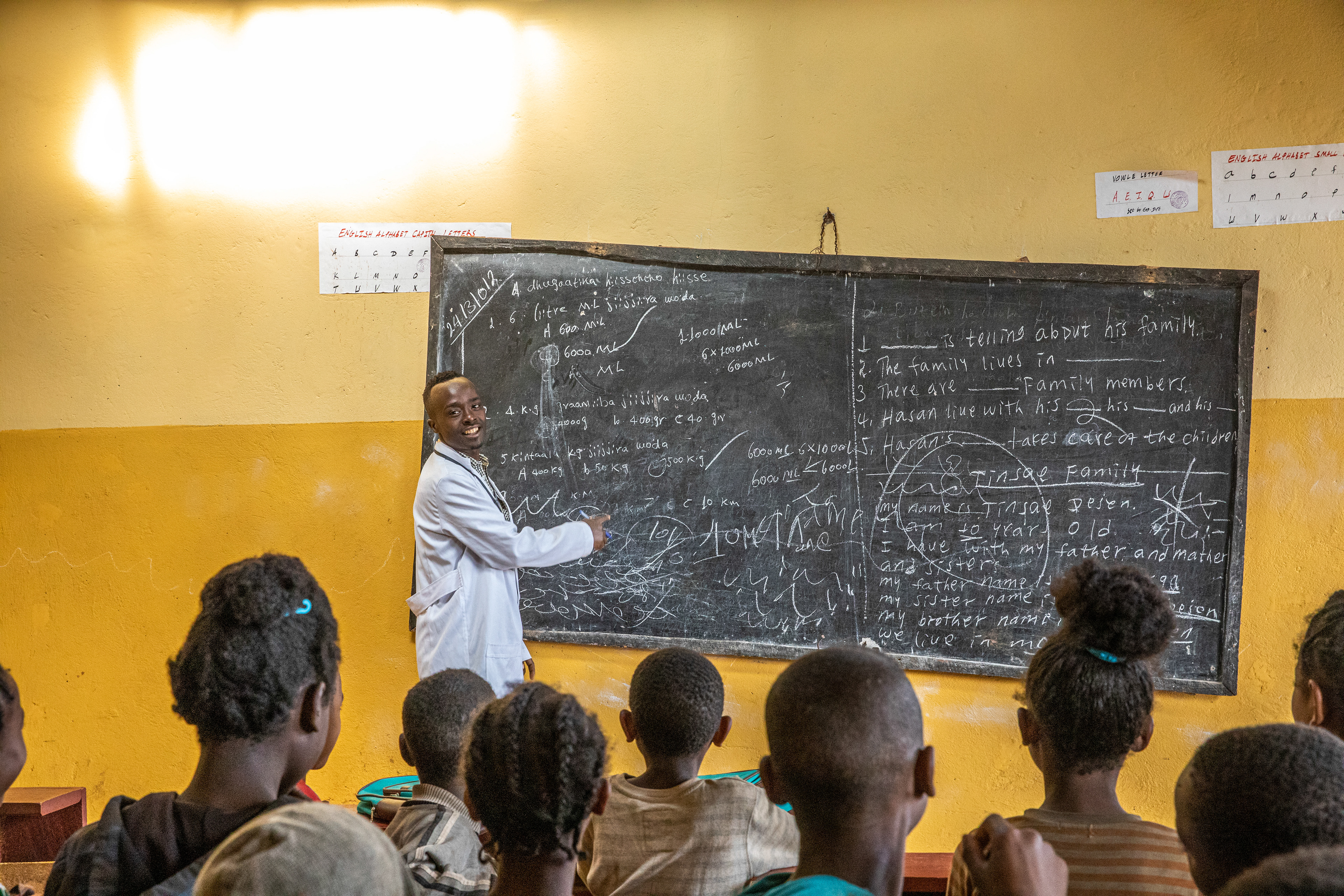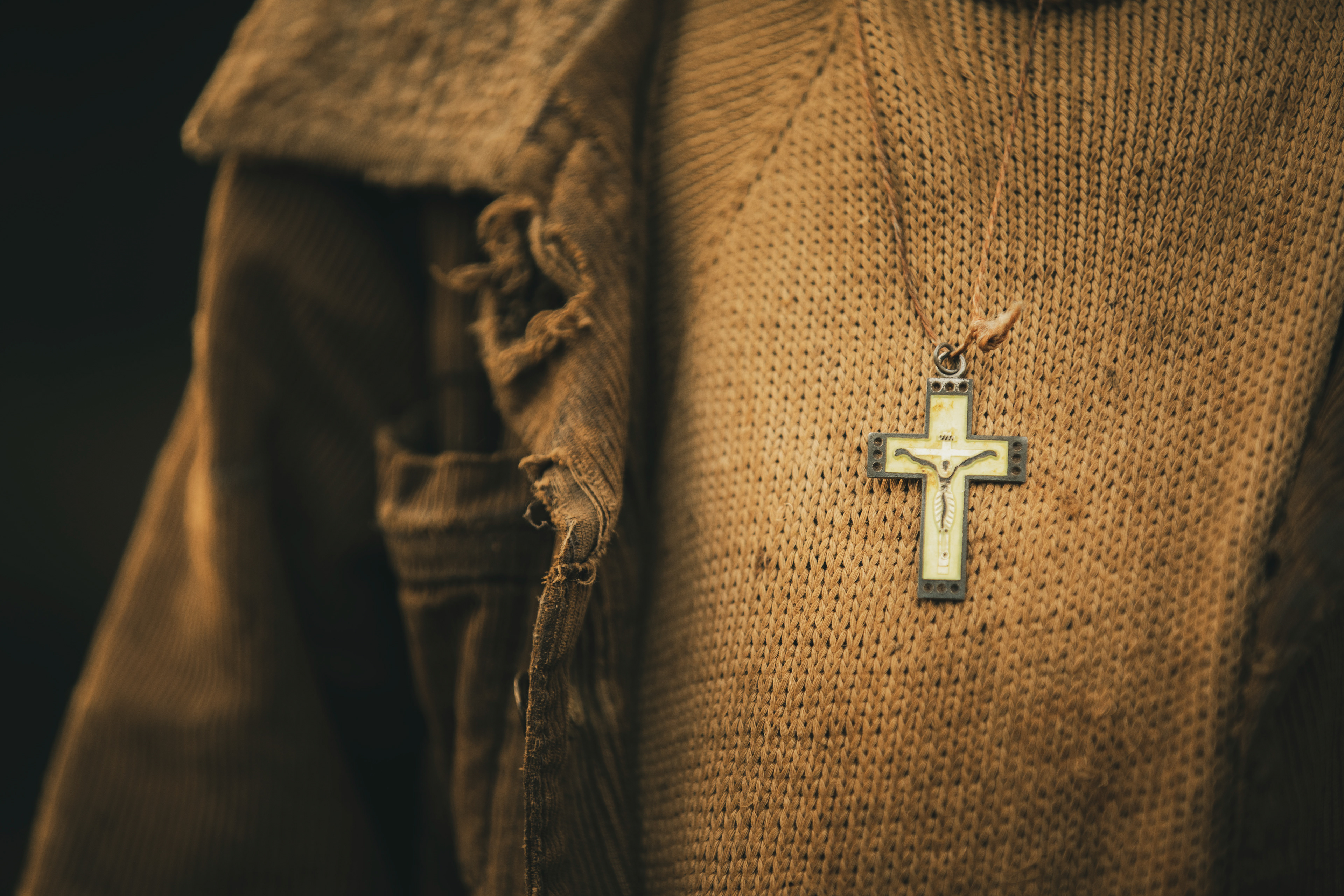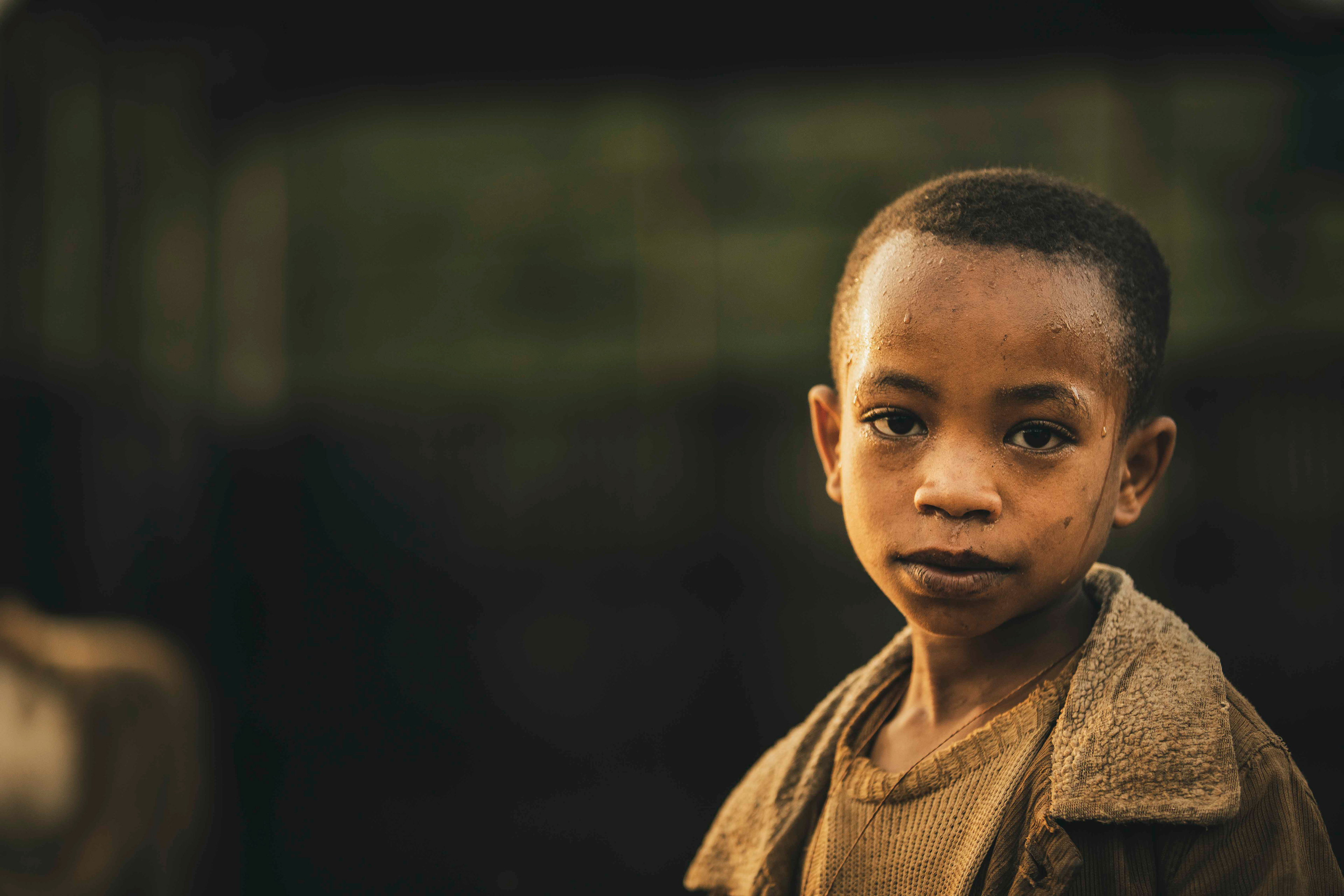Behind the cup of coffee are the people, who are they? Adina Asefa is 6 years old. He lives in the small coffee village of Aricha in southern Ethiopia with his mother Almaz Asefa. Every day after school he and his friends play soccer. His soccer shoes are covered in the African red dusty sand. The holes in the pants do not lie that things are going hard on the pitch. Adina has received a booklet that once was a nice notebook from school. He proudly shows the booklet that has goal-scoring Zlatan Ibrahimovic covered on the crumpled front page. The information 50 sheets is crossed out. 50 pages are no longer available. But it does not matter.
Around the neck hangs a piece of jewelry shaped like a cross. The chain is strong. It gives a clear picture of how strong the faith is. Belief in a good and healthy life. Every day the people gather on the coffee farm to pray a prayer and to sing together. Faith is the most important and strongest thing that brings them together in a community. Adina Asefa is one of many children we meet during our coffee trips. We call them coffee children. He is one of many who receive education in the village thanks to the fact that we and many other roasteries are fighting for better coffee. Because it is so, better coffee that is grown is better for both man, nature and the future. But how?
Around the neck hangs a piece of jewelry shaped like a cross. The chain is strong. It gives a clear picture of how strong the faith is. Belief in a good and healthy life. Every day the people gather on the coffee farm to pray a prayer and to sing together. Faith is the most important and strongest thing that brings them together in a community. Adina Asefa is one of many children we meet during our coffee trips. We call them coffee children. He is one of many who receive education in the village thanks to the fact that we and many other roasteries are fighting for better coffee. Because it is so, better coffee that is grown is better for both man, nature and the future. But how?
His mother Almaz works with coffee. She is part of the coffee communtiy in Aricha and takes part in what the value of the specialty coffee gives them. Education is a part, which for the future and the children is worth more than money in the pocket. The future is bright for these children. By growing better coffee, you get better quality. To get good quality, you have to let nature have its way and for better coffee, the roasteries pay more money. The equation is not difficult. But on the other hand, to make the consumer understand that the value of the product is higher than the price. The school Molicha is a school that has been built and provides many coffee children with education. Zerihun Aseeffa has been a teacher there for three years. All 500 children who go to this school are coffee children who get a better future through sustainable coffee

